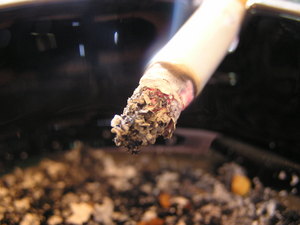Gregory Maguire’s Wicked:The Life and Times of the Wicked Witch of the West converts L. Frank Baum’s novel for children into a multilayered and much darker postmodern meditation on both the nature of evil and the effect that propaganda has on how ideological perspectives are inculcated. The Oz of Baum was an attempt to impose a utopia; Maguire shows that one man’s utopia is another woman’s dystopia . The world of Maguire’s Oz seems topsy-turvy at first as the characters the reader presupposes to be either or evil are shown to behave with little actual difference from the previous incarnation, yet have those actions reconstituted contextually to subvert expectations.
Wicked begins shortly before the actual birth of the strange green girl who will grow up to take the title of Wicked Witch of the West. Her parents are Frexspar who is a struggling clergyman and his noble-born harlot of a wife, Melena. Melena appears to be the source of much of her daughter’s rebellious character, as she rebels against her parents by marrying beneath her station and she rebels against her husband by sharing the company of a string of lovers. Cast away in the lonely frontiers of Munchkinland, Melena enters the equally unknown environs of childbirth with only the aid of some strange local women who administer a drug called pinobble to alleviate her pain. The child is daughter, healthy, but with green skin. Frex and Melena expend great effort in dealing with the strange affliction of their daughter; not only does she have green skin but appears also to be allergic to water. The daughter, named Elphaba in homage to the sounds L. Frank Baum, is raised as much by the same nurse who raised Melena as she is by her parents.
Elphaba’s otherness is endowed within her from birth; her childhood is one characterized by her family protecting themselves by protecting Elphaba from socializing with other children. It is this otherness that will eventually cause her to marked as wicked and a witch and the novel’s beginning explodes with the mythmaking idea that a wicked witch is thought always to be born rather than be made. Elphaba is a strange child in that she is precocious about how external forces serve to act upon her and imprint an identity that is not her own choice, but that she nonetheless chooses to exploit once it become a natural fact. Contemptuously rejected by her family, Elphaba is directed toward a course in which she has no choice but to always play the outsider. Adding to her social anxiety is that she is viewed by her father as a punishment from God for his transgressions; his daughter’s inability to get near water is viewed as a symbolic inability for her to be baptized from her owns sins. Compounding the injury to Frex is the insult that is tossed his way as a result of her daughter’s decision to embrace atheism and reject his religious beliefs.
Elphaba becomes a wicked witch not as the result of a punishment from God, or because she is born that way, but because in the pursuit of her own identity she struggles to help others who have been disenfranchised. Far from viewing her father’s religion as a path toward salvation for those who have been oppressed, Elphaba comes to view the traditions that those in Oz have clung to as the perpetrators of suppression (Cashdan 234).
The opening section closes with a mysterious vision for Elphaba: a man arriving in a hot air balloon; the vision fills the young green girl with dread and horror. The next time the reader sees Elphaba she is grown up and heading off to college where she meet a self-centered young woman named Galinda. One of the themes that the novel is consistent in is questioning the traditional views and values that associated beauty with goodness and wickedness with otherness. The most obvious element that makes up this thematic fabric is the contrast of the vain Galinda who is the object of desire for almost all the males she comes into contact with, and Elphaba who is so socially awkward that Galinda-who will eventually change the spelling of her name to the one most readers are more familiar with-seizes the opportunity to help the unfortunate green girl as a chance to prove she is more than just a pretty face. Glinda’s preoccupation with outer appearances is directly oppositional to Elphaba’s fiercely determined mission to not concern herself at all with appearance; yet both lead to actions that earn them the potential for being the truly wicked witch of Oz.
The impetus behind Elphaba’s wickedness is not entirely removed from an appreciation of appearance, but her vision of what is important in life is not about how one looks, but rather how when one looks different they are inevitably treated differently. Elphaba’s path to wickedness in the eyes of the prevailing power structure begins when the college professor she most admires is removed not only from his position as a teacher, but his position as a sentient Animal for no other reason than that he isn’t humanoid. This edict is ordered by the Wizard as part of his despotic nation-building effort. Dr. Dillamond and the other Animals are reduced to beasts of burden no different from any other animal incapable of speech or complex thought. Elphaba’s infuriated indignation toward this small step taken by the fascistic Wizard leads her on a path away from college and into the underground of the Emerald City. The middle section of the novel can rightly be interpreted as a meditation on radicalization. Elphaba’s adventures in the Emerald City officially mark her as wicked because she engages in terrorist activities that, were they committed by someone in the service of the Wizard, would result in her being called not wicked, but a freedom fighter (Shewey) .
Elphaba is a freedom fighter, of course, but the freedom she is continuously battling to gain is not really directed toward Animals and beings disenfranchised by the Wizard, but he own freedom that was disenfranchised by her father. Nessarose is Elphaba’s younger sister, the Wicked Witch of the East upon whom Dorothy Gale’s house will eventually land, setting in motion the strange events culminating in the accidental murder of Elphaba. Nessarose, interestingly, is born with malady as well; she is born without arms. But unlike the green skin that their father abhors in Elphaba, Frex makes clear that Nessarose is his favorite. It is the gift to the favorite, of silver slippers, that stands as the symbol of Elphaba of all that is wrong with her world. The father bestow the shoes to Nessarose instead of Elphaba in the manner of a giving sweets to the sweet. In other words, Elphaba never receives anything beautiful from her father because in his eyes she isn’t beautiful, but rather a curse from the Unnamed God. Elphaba desperately desires the shoes once Dorothy’s house crushes her sister as a belated token of affection from her father, but also because the slippers have been given a magical power by Glinda that allows Nessarose independent movement. This movement, however, does not result in Nessarose’s beauty and innocence being exploited. Instead, Frex’s favorite is the daughter who gives in to real wickedness, becoming the kind of fundamentalist religious tyrant all too familiar to readers today. The evolution of Nessarose’s character serves as a bookend to that of Glinda in providing Elphaba with the sympathy necessary to make her prickly character the one with which the average reader is willing to identify. The shoes also underscore that Elphaba will remain forever an outsider.
The final section in which Elphaba travels to self-exile in Kiamo Ko shows how the image of the wicked witch is constructed. Elphaba attempts to learn the secrets of dark magic from the Grimmerie, a book of secrets that is the object of the Wizard’s journey to Oz, and this section provides explanations for much of the iconic images of the Wicked Witch of the West that most readers expect: the pointy hat, the flying monkeys, the broomstick. By this point, Elphaba has lost her lover, her family, and even her passion. She descends into a kind of madness, but never achieves the wickedness associated with her. Her legend grows from the point of mystery; wild tales about her past and her abilities grow and she becomes the target of ridicule and fear. The real object of the Dorothy’s mission in the name of the Wizard isn’t Elphaba’s broomstick, but the Grimmerie. The Grimmerie connects the Wizard’s world with Oz, and is symbolic of Elphaba herself, who also serves as a more potent connection since it revealed late in the novel that the Wizard may be her father.
Gregory Maguire’s Oz is a land that is no longer situated in alienated fantasy, but acts as an allegory about the world the Wizard escapes from: our own world. The wickedness of the witch is a parable about moral relativism. What appears wicked or good from one perspective can be revealed as just the opposite or, far more likely, to contain subtle shades of gray.



